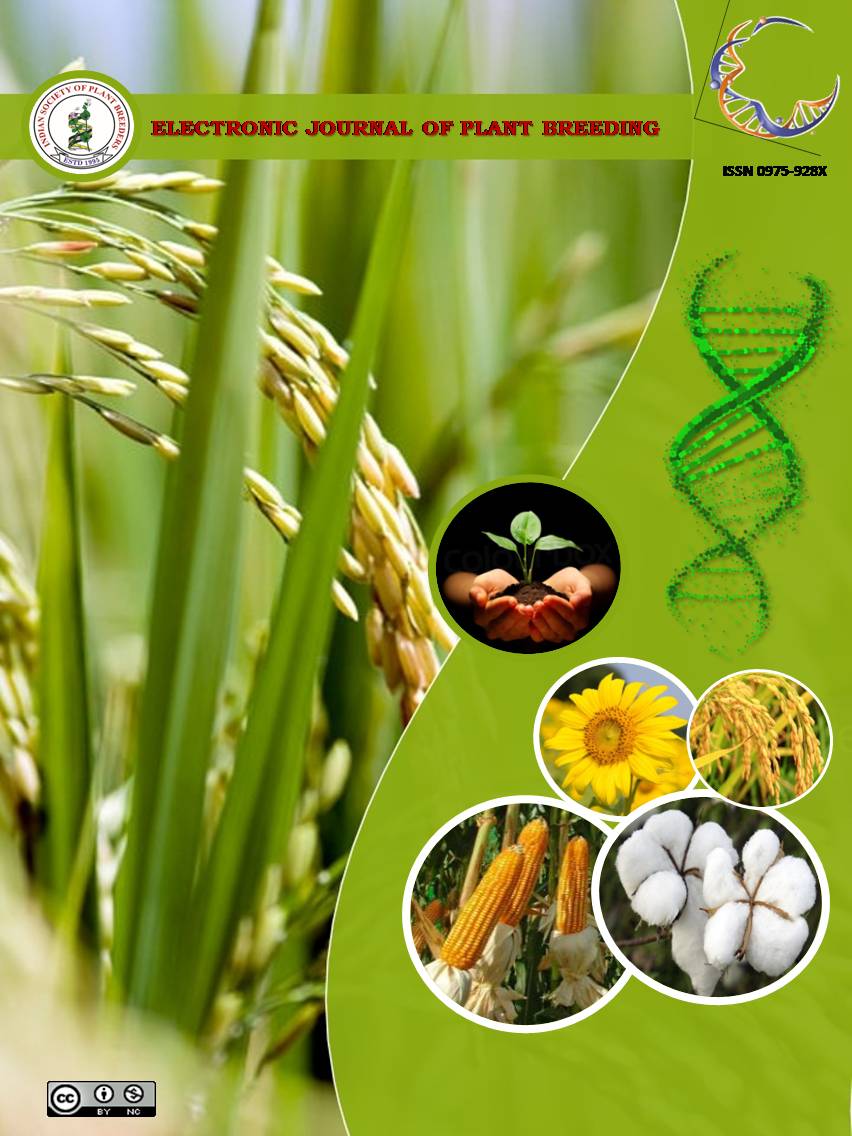Genetic variability analysis in F2/F3 population derived through inter-specific hybridization in oilseed Brassica
Abstract
The experiment was carried out to estimate genetic variability among thirty-five genotypes of oilseed Brassica, including 20 F2s/F3 populations derived through interspecific hybridization and 15 parents, during rabi 2015-16 and 2016-17. Pooled analysis showed that considerable variability was observed among F2s/F3s and parents for all the fourteen characters. Variation due to “location x treatment” was significant only for secondary branches & oil content. The estimates of GCV and PCV were comparatively higher for plant height, primary & secondary branches/plant, number of siliquae per plant, siliqua length, seeds per siliqua, test weight, seed yield per plant and oil yield per plant. High estimates of heritability were recorded for all the characters. The estimates of genetic advance (GA) were also recorded high for number of siliquae per plant and plant height. Number of siliquae per plant showed high heritability (92.4 %) together with high genetic advance (219.1%) and genetic advance as percentage of mean (78.8). Traits like siliquae per plant and plant height might be considered as high potential traits for effective selection for further crop improvement in Brassica spp.

It is certified that:
- The corresponding author is fully responsible for any disputes arising due to the publication of his/her manuscript.
- The article has been seen by all the authors who are satisfied with its form and content.
- The sequence of names of authors in the by-line is as per their relative contribution to this experiment, giving due credit to all scientists who made notable contribution to it.
- All the authors fully understand that inclusion of any other co-authors or exclusion of any co-authors is not possible once the article has been submitted to the journal.
- The corresponding author takes full responsibility for this article.
- The address of the organization where the research was conducted is given.
- The article is exclusive for this journal, and the results reported here have not been sent (and will not be sent during its consideration by this journal) for publication in any other journal.
- Authors agree to abide by the objective comments of referees and do agree to modify the article into a short note as per the recommendation, for publication in the Electronic Journal of Plant Breeding.
- If published in Electronic Journal of Plant Breeding, the copyright of this article would vest with the Indian Society of Plant Breeders, who will have the right to enter into any agreement with any organization in India or abroad engaged in reprography, photocopying, storage and dissemination of information contained in it, and neither we nor our legal heirs will have any claims on royalty.


